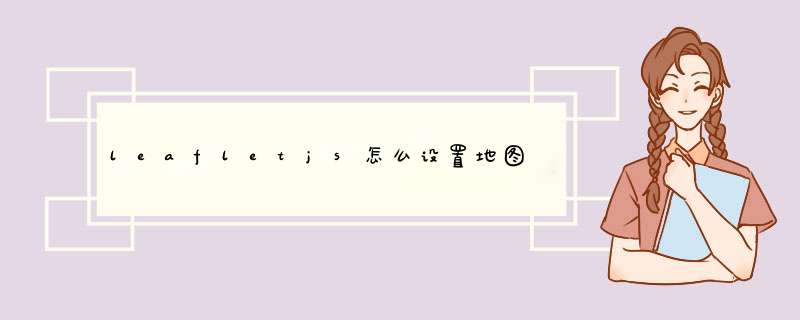
<link rel="stylesheet" href="http://cdn.leafletjs.com/leaflet-0.7.3/leaflet.css" />
<script src="http://cdn.leafletjs.com/leaflet-0.7.3/leaflet.js"></script>
然后构建地图,并添加openStreetMap
// create a map in the "map" div, set the view to a given place and zoom
var map = L.map('map').setView([51.505, -0.09], 13)
// add an OpenStreetMap tile layer
L.tileLayer('http://{s}.tile.osm.org/{z}/{x}/{y}.png').addTo(map)
// add a marker in the given location, attach some popup content to it and open the popup
L.marker([51.5, -0.09]).addTo(map)
.bindPopup('A pretty CSS3 popup.
Easily customizable.')
.openPopup()
运行效果如下:
结合Qunee拓扑图
Leaflet地图上可以添加点线面基本图形,如果需要展示更复杂的图形或者链接关系,显得力不足,可以结合Qunee组件使用,下面我们让地图和拓扑图叠加起来,在地图上显示拓扑元素,并整合两者的交互
图层叠加
在地图的DIV容器中添加一个孩子div,作为拓扑图的画布,并设置相应的css,然后调用超类的构造函数,取消默认的双击和滚轮 *** 作,已被后面地图与拓扑图的交互同步var MapGraph = function (map) {
var container = map._container
var canvas = document.createElement("div")
canvas.style.width = "100%"
canvas.style.height = "100%"
container.appendChild(canvas)
Q.doSuperConstructor(this, MapGraph, [canvas])
this.enableWheelZoom = false
this.enableDoubleClickToOverview = false
this.originAtCenter = false
this.setMap(map)
...
}
关联地图
下面实现拓扑图与地图的绑定,在#setMap(map)函数中,监听了地图的zoomstart和zoomend事件,根据经纬度动态的调整图元的屏幕位置,同样在节点被拖动后,也需要设置新的经纬度MapGraph.prototype = {
map: null,
mapShowing: true,
enableInertia: false,
createNodeByLonLat: function (name, lon, lat) {
var l = this.toLonLat(lon, lat)
var p = this.getPixelFromLonLat(l)
var node = graph.createNode(name, p.x, p.y)
node.lonLat = l
return node
},
toLonLat: function (lon, lat) {
return new L.latLng(lat, lon)
},
getPixelFromLonLat: function (lonLat) {
return this.map.latLngToContainerPoint(lonLat, this.map._zoom)
},
getLonLatFromPixel: function (x, y) {
return this.map.containerPointToLatLng([x, y])
},
setMap: function (map) {
this.map = map
this.map.on("zoomstart", this.hideGraph, this)
this.map.on("zoomend", this.updateNodes, this)
this.html.ondblclick = createEventFunction(this, function (evt) {
if (this.getElementByMouseEvent(evt)) {
Q.stopEvent(evt)
}
})
this.interactionDispatcher.addListener(function (evt) {
if (evt.kind == Q.InteractionEvent.ELEMENT_MOVE_END) {
var datas = evt.datas
Q.forEach(datas, function (data) {
var pixel = this.toCanvas(data.location.x, data.location.y)
data.lonLat = this.getLonLatFromPixel(pixel.x, pixel.y)
}, this)
}
}, this)
},
hideGraph: function(){
this.html.style.visibility = "hidden"
},
showGraph: function(){
this.html.style.visibility = ""
},
translate: function (tx, ty) {
Q.doSuper(this, MapGraph, "translate", arguments)
this.map.panBy([-tx, -ty], {animate: false})
},
resetVisibility: function () {
this.forEach(function (e) {
if (e.invalidateVisibility) {
e.invalidateVisibility(true)
}
})
},
updateNodes: function () {
this.translateTo(0, 0, 1, true)
this.resetVisibility()
this.forEach(function (d) {
if (d instanceof Q.Node) {
var l = d.lonLat
var p = this.getPixelFromLonLat(l)
d.location = p
}
}, this)
this.showGraph()
}
}
Q.extend(MapGraph, Q.Graph)
此外还可以通过可见过滤器实现,不同比例尺显示不同的节点
在leaflet地图中画自定义覆盖物,使用自己的图标,如果图标的宽高和Point(x, y)的大小不匹配,则会出现覆盖物漂移问题。
这个时候,我们要设定正确的值,使Leaflet的Point(x, y)对象的中心点和覆盖物中心点对应。
设置好之后,测试效果如下
下载源码或者针对问题对源码进行修改,或者引用新的js文件和css文件。由于图层不是leaflet原生类,可以修改的参数也比较有限,但是在实际应用中,会根据实际会对聚合图层有一些自己的要求,但是却无法修改。
通过在leaflet.markercluster-src.js搜索“large”,可以搜索到进行分段的相关代码。可见默认只对点数量聚合了三类,并且范围写死,100以上全部为红,导致数据量大展示效果十分不好。找到相应的代码就是可以改了,改起来也十分简单,如果要修改数量范围直接修改数字即可,如果要新加颜色样式可以添加else if (childCount 回答于 2022-04-20
欢迎分享,转载请注明来源:内存溢出

 微信扫一扫
微信扫一扫
 支付宝扫一扫
支付宝扫一扫
评论列表(0条)